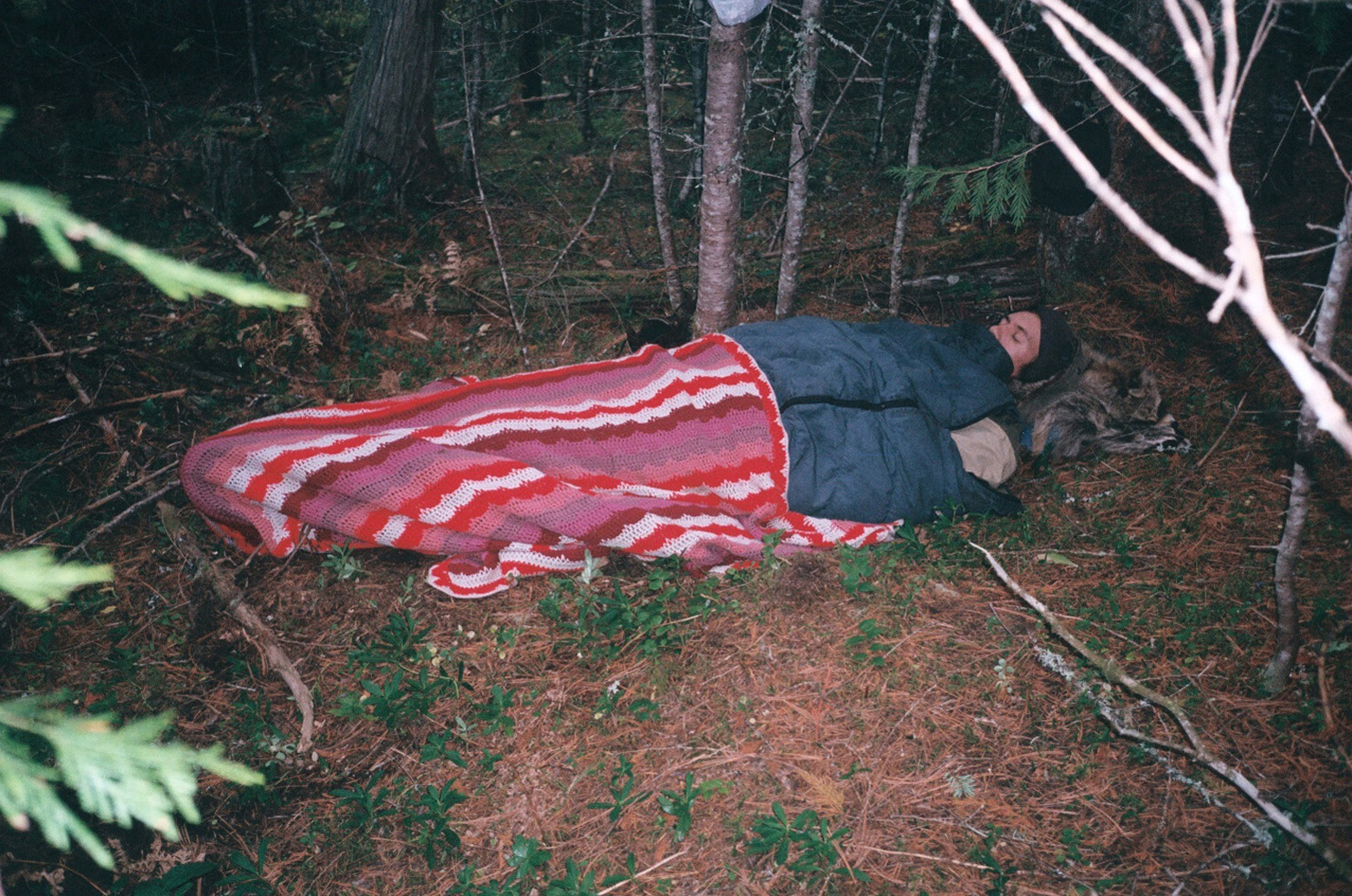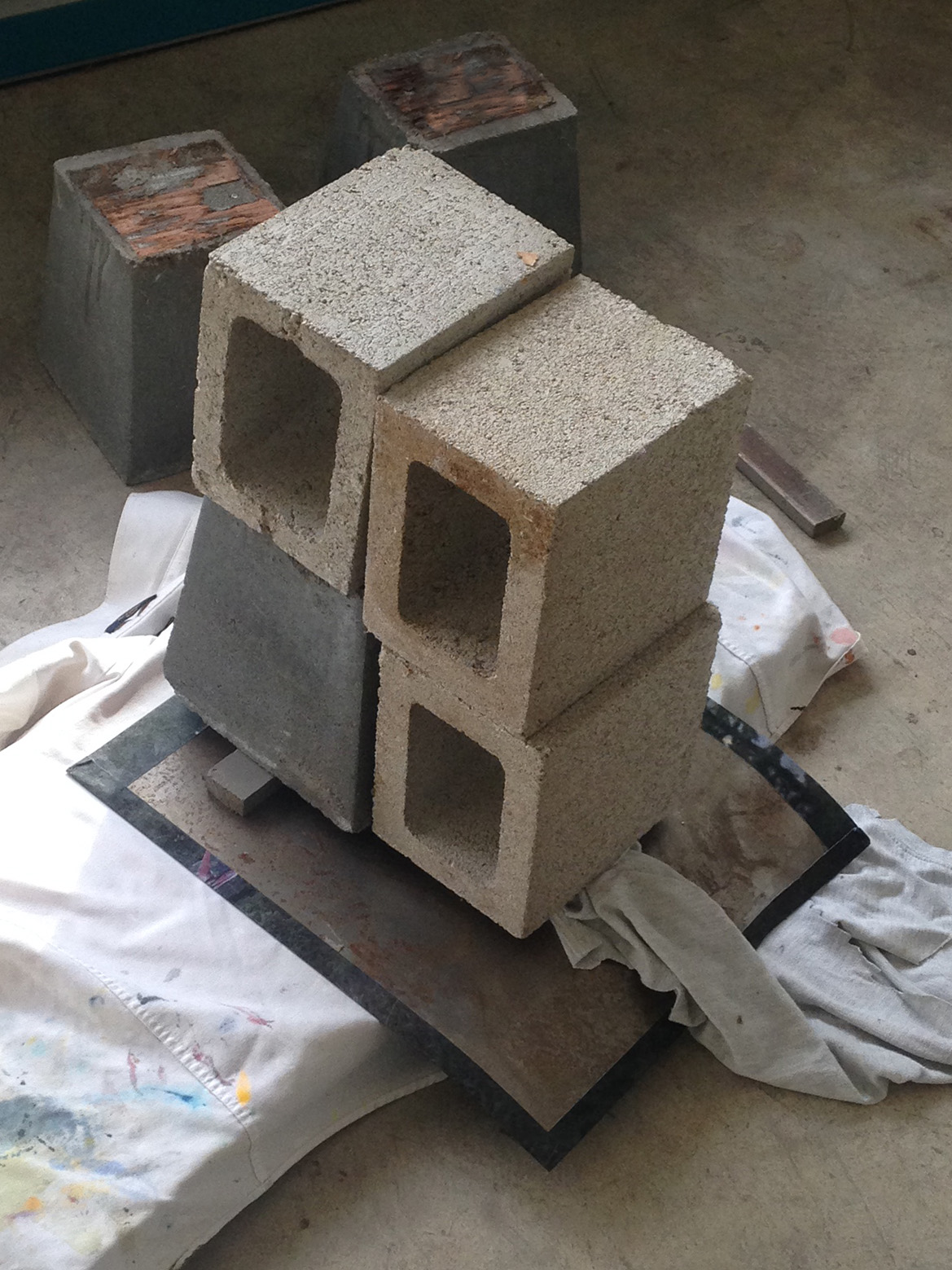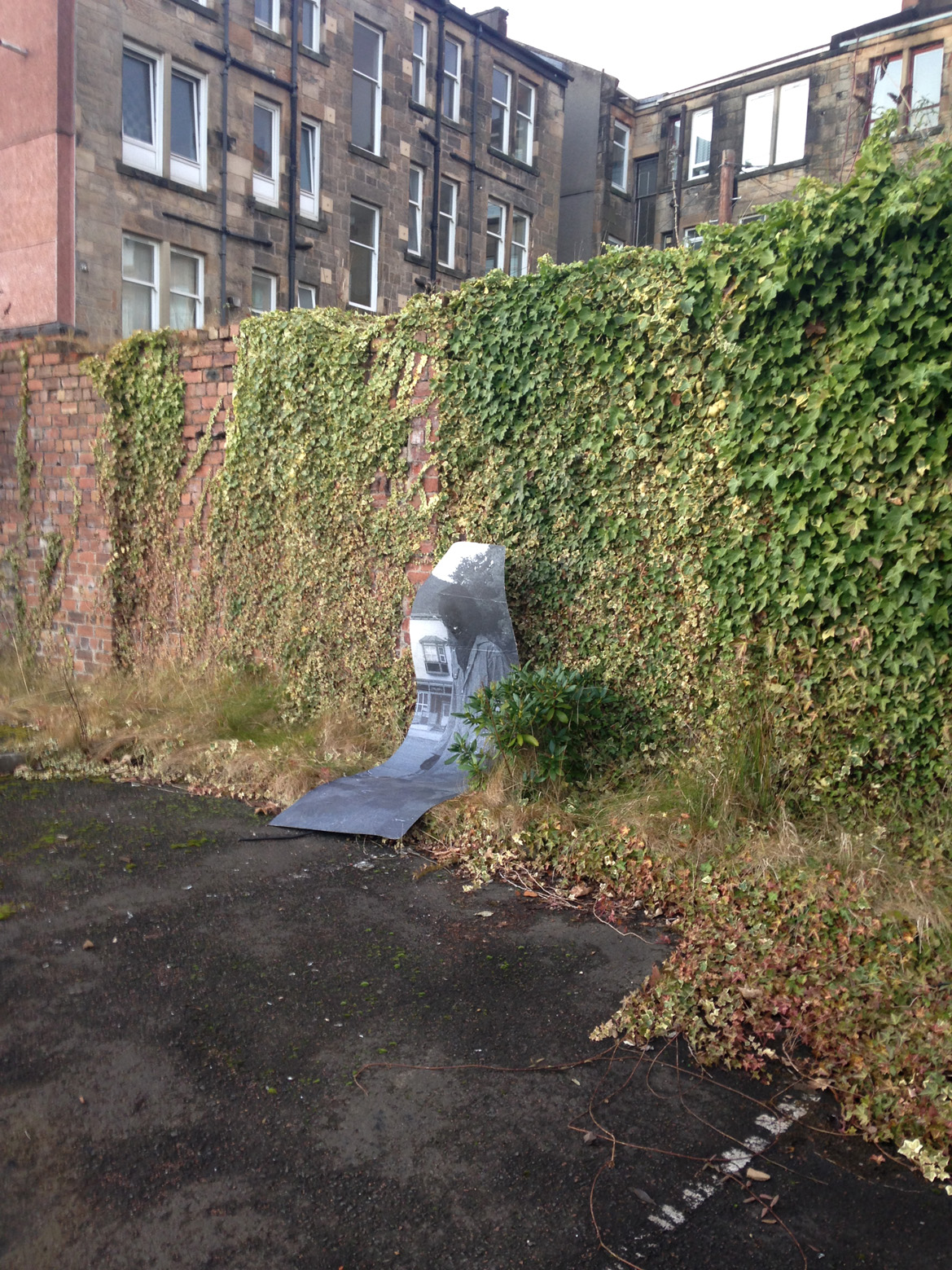Justin Apperley

Justin Apperley. Fit Fer a Skid. 2019 35mm colour print.


Waiting for the Revolution. 2020.
35mm colour print.
35mm colour print.
On the Alaska Highway. 2014.
35mm colour print.
35mm colour print.

Justin Apperley. Wild Camping in Galway.
2019. 35mm colour print.
2019. 35mm colour print.

Justin Apperley. Laid to Rest in Winlaw.
2014. 35mm colour print.
2014. 35mm colour print.
BIOMASS: A lot of questions come up looking at these photographs, but let’s start with the what, where, how. What we are looking at, where are they and how were they made?
Justin Apperley: These works are five analog, 35mm, colour photographs. Over the last ten years my practice has materialized through a balance of travelling and interacting, so of course the moment we’re in presents a unique challenge. These particular photos are of makeshift, diy sleeping quarters, how to live on the road discreetly, and more of a punk notion on the meaning of home. A lot of tarps, camouflage and natural materials. The images are taken in the Yukon, Nova Scotia, Northern British Columbia, Ireland, and Southern BC in the Slocan Valley.
B: *Sneezes*
JA: Oh-bless-you! Yeah, So I see these five images suggesting an underground pirate-esque nomadic network. Kind of like vulnerable self-sufficient remnants or paused autonomous moments. Lately, the majority of my work stems from a Yukon perspective, I think, for me, there is something very compelling about the ways people live up here, as well as in other off-grid communities.
B: How would you describe how people live up there, what has caught your attention?
JA: Well we are just so far [north]! So there is a lot of impetus to prepare or be self-sustainable, just to really be on top of your game. By default, a good amount of people who live in town [Dawson City] have most amenities, but there are lots of people who are choosing to be out in a cabin without running water, just an outhouse, have to fall trees and buck wood to burn in their wood stove for warmth, I even have some neighbours who would rather live with candles all winter, no generator, nothing. There’s something about being really direct with your lifestyle choices, it's empowering. A bunch of my friends, wild artists, queer friends, punk friends, are just moving out into the bush! Within my own practice and life, I’m constantly playing with narratives of celebration and counter-cultural empowerment especially within rural settings.
B: On the one hand these images could be read as documented sites, but they also seem very intimate or personal.
JA: The images are mostly temporary camping sites from my own travels, whether solo or with friends, as well as some abandoned sites. I rarely take a photograph of someone I don’t have some sort of tie to, so I think the personal element comes through in that way. I also really try to grab hold of the moment with an image, so they are all quick snaps, in passing.
B: Are there other elements, parts of your practice not included here?
JA: Yeah actually, I've been mounting my photographs onto metal, sheet or bent metal that I’ve ‘harvested’ from scrap piles or scavenged from the free store. (gets up to grab a piece of metal in the studio) Lately I’ve been working with black and white photographs that have been polarized, wheat pasting them on, and not only accommodating, but highlighting imperfections in the metal like rust, holes or tears. It’s also really liberating to weld or rivet multiple pieces of metal together to create new forms, or cut away with the sawzall before mounting the photograph. Additionally, as a form of hands-on research, I’ve been exhibiting these works in non-conventional gallery settings; abandoned buildings, or outside in the woods, seeing how the medium weathers and deteriorates over time. I’m finding so much freedom to push away from framed flat square images and ‘white cube’ spaces, being mindful of the sculptural potential of each image and discovering ways I can push the work forward with experimental processes.
Decadent Decay. Process. 2019.
B: What conditions led to more dimensional work? And what have you learned over time about editing?
JA: During my MFA in Glasgow, I was pretty committed to putting my all into the programme, and as a result I wasn't travelling as much. This meant that I wasn’t taking as many photos and instead spent most of that time in the studio. I think being restricted actually opened up a new avenue in my practice; I started considering my images in a different way. Especially now, since transience isn’t really an option at the moment, I feel a similar potential and opening for my work, however it significantly slows down my process. I probably shoot a roll once a month, I’m quite careful with what I photograph between my 35mm and medium format camera, and I scan the images with high resolution. Then I use my dashboard as an organizing palette to slowly sift and edit, gradually taking out what I don’t want. It’s overly meticulous, but I think curation is a crucial part of my practice; the narration and story woven between each photograph.
B: Sounds a lot like a writing process.
JA: It's exactly like a writing process, yeah, having your introduction, your main points, theme, conclusion. I’m always seeking out some kind of protest within my work; Another way of living, another option, something that may be a different choice.
B: 2020 has obviously been a weird year for exhibiting work. What has changed for you in terms of creating exhibitions?
JA: Right after grad school I had a handful of shows abroad that were quite motivating. However, in the last six months things have slowed down substantially aside from a few online opportunities. Even though this slower pace is hard to come to terms with, to be honest, it’s probably for the best. We are now forced to turn to our immediate local communities for in-person artistic connection. I’m quite grateful to be based in the North, with so many creatives, educators and master level artists who gravitate up here, and right now, I’m most excited to be a part of the Jimmy’s Place Artist Collective, which has 8 artists working out of the old Jimmy’s Place video store. We are in the process of fitting together a community darkroom and curating monthly mini-solo exhibitions of local artists in our bay windows. I feel that the artworld is in a moment where we have this unique opportunity to redirect upward ‘ladder-climbing’ to a direction which stems out sideways. A chance to really bind close community networks together and support that growth. These next winter months I’m going to pour my all into this artist collective and see what difference we’ve made once we come out the other end.

Hurled Around // Twirled Around.
Process. 2019.

Handsome with Holes.
Process. 2019
Justin Apperley explores the drift between dystopic delirium and idealized rural living. Current research investigates real and imagined self-sustaining remote communities that embody intersectional values and ‘hunter & gatherer’ initiative through transient counter-culture and do-it-yourself ingenuity. Primarily working with photography, sculpture and print media, Apperley’s work deals with emerging themes of climate change, nomadic futures and alternative survival strategies.
